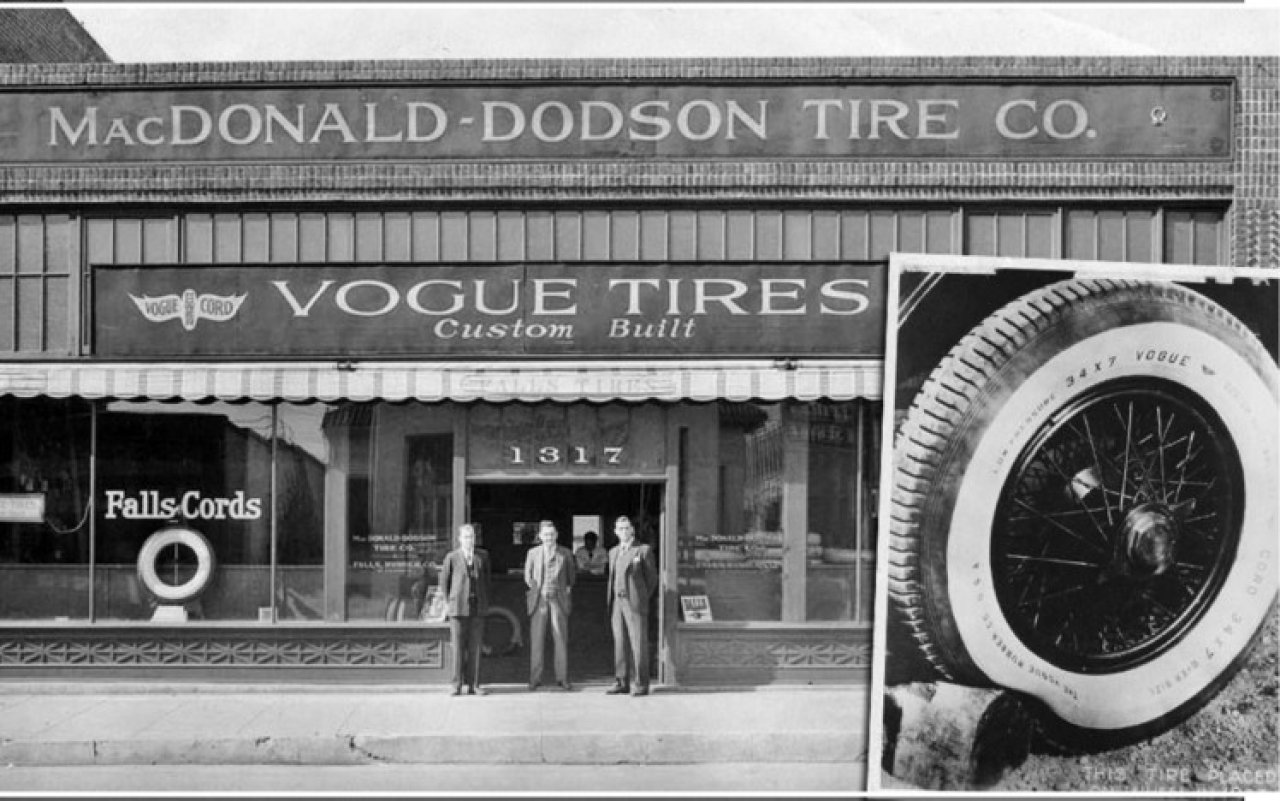Few companies have a history as rich or long-lasting as Vogue Tyre. The brand was born right before the 1920s, during a time when many Americans were first experiencing modern amenities, such as radios, telephones, and automobiles.
The 1920s were known as the decade of change, and Vogue's founder, Harry Hower, knew he wanted to play a part in the revolution.
AMERICAN’S EXPERIENCE MANY ‘FIRSTS’ DURING THE 1920S
Nearly everyone has heard the term the roaring twenties, and the decade was roaring, indeed. The period saw many 'firsts' including women getting the right to vote, the birth of mass culture, and the passing of two constitutional amendments within a single year.
For the first time in history, more people lived in the city than in the countryside. Meanwhile, the nation's total wealth more than doubled, allowing Americans to buy items they would not have been able to afford previously.
One such item was the automobile. At first, cars were considered a luxury only wealthy individuals, such as movie stars, could afford. But Henry Ford changed all that by offering the Model T – a car (costing just $260) that was affordable to the working class. Ford would go on to sell 15 million Model T automobiles throughout the country by 1927.
Suddenly, the automobile, now commonplace, was changing the entire landscape of the country. The working class was able to move to the suburbs and commute into the city for work. Roadways began to develop, along with drive-in diners, motels, and other businesses catering to motorists' needs.
VOGUE CHANGES THE AUTOMOTIVE SCENE WITH THE WHITEWALL TIRE
Shortly before the roaring 20s began, in 1914, a chauffeur by the name of Harry Hower had a vision of an all-new, whitewall tire design. Hower foresaw how the contrasting white and black layout would draw attention to chauffeurs like himself.
Vision alone wouldn’t make his dream a reality, though. That’s why, in 1918, Hower joined forces with the Woodbury family, who were already in the tire business, to put the Vogue whitewall tire into production.
Hower’s timing couldn’t have been better. Ford had opened the door for many Americans to start driving – and customizing – their own automobiles. Vehicle owners were looking for ways to make their car stand out, regardless of whether that meant altering the body or modifying the engine. The whitewall tire played into that desire by providing a distinctive, upscale look.
Almost immediately, the stylish whitewall design caught on, becoming a symbol of status and prosperity. Even automakers started to take notice, and, by the end of the decade, whitewall tires had found their way onto a variety of high-end production cars, such as the Duesenberg.
It was clear that, within the automobile industry, the whitewall was playing a role in the ongoing innovation surrounding the 1920s.
THE VOGUE TYRE AND RUBBER COMPANY EXPANDS TO THE WEST COAST
Until 1926, Vogue Tyres were sold exclusively in Harry Hower’s city of residence, Chicago. But news of the exclusive tire design had spread from coast to coast, creating a desire for the product across the country.
That’s when Hower made the decision to expand his venture to the West Coast by adding Dodson Limited of Los Angeles as a distributor.
In 1928, Lloyd Dodson signed a contract with Hower and Vogue’s other owner, Margaret Woodbury, to sell the brand’s whitewall tires. The deal signaled the beginning of Vogue Tyre’s national perspective, as well as the whitewall design’s climb to nationwide popularity.
The next year would see the stock market crash of 1929 and the beginning of the Great Depression. Yet Vogue Tyre would carry on well into the next century, thanks to one man’s extraordinary vision, and the family-owned company’s dedication to perfection.
VALUES FROM THE ROARING 20S CARRY ON INTO THE 21ST CENTURY
Nearly all of the core values and concepts that defined Vogue Tyre in the 1920s carry on today. For over 100 years, the brand focus has been on innovation, quality, and creating an exclusive product that exceeds expectations
Even though consumers now have a countless number of tire companies to choose from, Vogue is the only choice for the discerning vehicle owner looking for a designer tire. Just like in the 1920s, Vogue offers a way for drivers to make a car their own, and add a level of prestige with a simple tire swap.
Also, the decision Hower made in 1928, to expand Vogue beyond Chicago, laid the foundation for where the company is today. The brand now has various partners across the United States, forming a solid distribution backbone.
Every passing year, day, and minute is an opportunity for improvement. And Vogue has been taking advantage of those opportunities since 1914. That’s why the company is still here today – and why it’s expected to be around for another 100 years.
